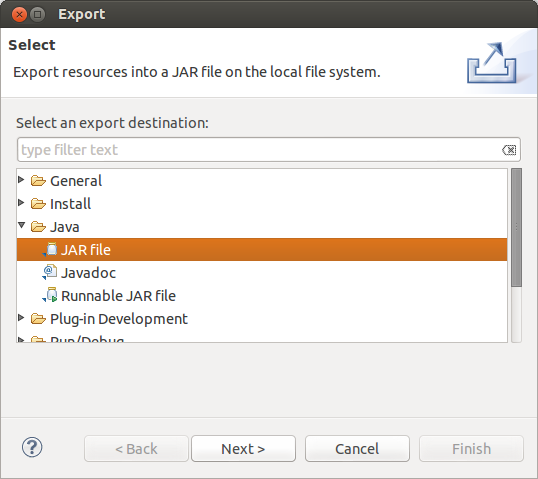Lars Vogel, (©) 2008 - 2026 vogella GmbH :revnumber: 2.6 :revdate: 06.07.2016
Using Java jar files. This tutorial explains the usage and purpose of Java JAR files.
1. Defining and using Java libraries
1.1. What is a Java library?
A Java library contains code which you can access and use in your Java project. The deployment format of a Java library is a JAR file.
1.2. What is a JAR file?
A JAR file is a Java archive based on the pkzip file format. JAR files are the deployment format for Java. A JAR can contain Java classes and other resources (icons, property files, etc.) and can be executable.
You can distribute your program in a jar file or you can use existing java code via jars by putting them into your classpath.
If you add a JAR file to your classpath, you can use its classes in your Java application.
2. Executable JAR
An executable JAR means the end-user can run the Java application without explicitly specifying the Java class which should be started.
This is done via a MANIFEST.MF file which tells the JVM among other things which class contains the main() method and the classpath.
The following example shows one possible MANIFEST.MF
file.
Manifest-Version: 1.0
Main-Class: com.vogella.example.MyApp
Class-Path:. lib/jcommon-1.0.6.jar lib/itext-1.4.6.jarAn empty line is required at the end of the MANIFEST.MF file.
You can create an executable JAR file via the following command.
jar -cvmf MANIFEST.MF app1.jar *.class
Eclipse provides an export wizard to create a JAR file that can be started via .

3. Links and Literature
Nothing listed.
3.1. vogella Java example code
If you need more assistance we offer Online Training and Onsite training as well as consulting

